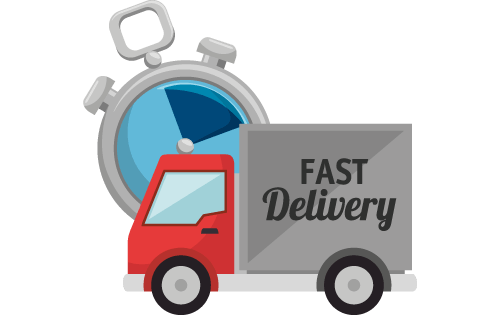Mastering the Order Fulfillment Process
Built For



Mastering the Order Fulfillment Process
When customers place an order, the clock starts ticking. Whether you’re shipping products to businesses or consumers, fulfilling those orders quickly and accurately can be the difference between a satisfied customer and one who looks elsewhere. Mastering the order fulfillment process is key to ensuring faster deliveries, happy customers, and a smoothly run operation.
Understanding the Stages of the Order Fulfillment Process
The order fulfillment process isn’t just about putting products in boxes and shipping them out. It involves several interconnected steps that must flow seamlessly to ensure timely and accurate deliveries.
Receiving Orders
This is where the journey begins. Orders come in from different sales channels—your website, online marketplaces, EDI, or direct sales teams. Having a system in place to consolidate all these orders is essential. It prevents overselling, keeps everything organized, and makes it easier to process orders efficiently.
Processing Orders
Once orders are received, they must be verified and prepared for fulfillment. This involves checking the inventory to ensure items are in stock and ready to go. An efficient order management system can automate much of this process, ensuring you work with real-time data and avoid stockouts or delays.
Picking and Packing
Next is picking and packing. In this stage, warehouse staff locate the items in your inventory, pack them securely, and prepare them for shipping. Efficient picking strategies—like zone or batch picking—can save time and minimize mistakes. Packing also plays a crucial role here, ensuring that items arrive in great condition.
Shipping and Delivery
Shipping is often the final touchpoint in the fulfillment process. The right shipping carrier and delivery speed can make or break customer satisfaction. Automating label creation and integrating with shipping carriers can speed up this process and provide customers real-time tracking updates. Getting packages out the door quickly is vital to on-time deliveries.
Handling Returns
The order fulfillment process doesn’t end when the product is delivered. Returns are an inevitable part of doing business, and managing them effectively is critical. Return Merchandise Authorizations (RMAs) simplify returns, giving customers a smooth experience and making it easier for your team to handle restocking or replacements.
Best Practices for Optimizing Order Fulfillment
Whether you’re just getting started or looking to refine your existing process, here are some tried-and-true strategies for making your order fulfillment more efficient:
- Implement Automation: Automation is your best friend when speeding up the order fulfillment process. Software that automates tasks like inventory updates, order verification, and shipping label generation can save time and reduce the risk of human error.
- Improve Inventory Accuracy: Accurate inventory levels are critical to a smooth fulfillment process. You can fulfill orders without delays when you know precisely what’s in stock. Regular cycle counts and real-time inventory tracking systems help you keep stock levels accurate.
- Optimize Warehouse Layout: A well-organized warehouse means faster picking and packing. Arrange items logically—group similar items together and place high-demand products in easily accessible areas. The less time your team spends looking for products, the faster they can pack and ship them.
- Centralize Orders from Multiple Channels: If you’re selling across different platforms (eCommerce, EDI, online marketplaces), consolidating all orders into one system can prevent confusion and delays. Centralizing orders ensures that nothing slips through the cracks and makes it easier to fulfill orders on time.
Common Challenges in the Order Fulfillment Process

No process is without its challenges. Here are a few common obstacles businesses face when trying to master order fulfillment—and how to overcome them:
- Inventory Stockouts or Overstocks: Running out of inventory or overstocking items can lead to delays or wasted resources. Prevent stock issues by using demand forecasting tools and monitoring sales trends.
- Manual Errors: Human error is inevitable when you rely on manual processes. From mispicks to shipping mistakes, these errors can slow down fulfillment. Automation, barcoding, and regular staff training can help minimize mistakes.
- Shipping Delays: There are many reasons orders might get delayed—carrier issues, weather, or mistakes in shipping addresses. Proactively managing shipping by offering multiple carrier options and providing customers with tracking updates can help prevent dissatisfaction.
Measuring Success: Key Metrics to Track in the Order Fulfillment Process
To ensure your order fulfillment process is working as efficiently as possible, keep an eye on these key metrics:
- Automated Notifications: Keep customers in the loop with automated emails and SMS updates on their order status. From “Order Confirmed” to “Shipped” and “Out for Delivery,” these notifications give customers peace of mind.
- Returns Management: A smooth returns process can turn a potential headache into a positive experience. Order management software makes it easy to handle returns and exchanges, keeping customers happy even when something goes wrong.
- Omnichannel Integration: Do you sell through multiple channels—your website, Amazon, eBay, and more? Order management software brings all those orders into one system, so you don’t have to worry about managing them separately. Customers benefit from consistent experiences no matter where they shop with you.
- Integration with Shipping Carriers: Provide customers with more shipping options and real-time tracking links. This feature allows customers to follow their orders’ journeys, ensuring they know exactly when to expect delivery.
Order management software is truly a secret weapon for keeping your customers happy. By streamlining the order process, providing real-time updates, and minimizing errors, order management software ensures customers receive their orders quickly and accurately. As a result, you’ll enjoy higher customer satisfaction, better reviews, and a stronger reputation.
Call us at 817-870-1311





